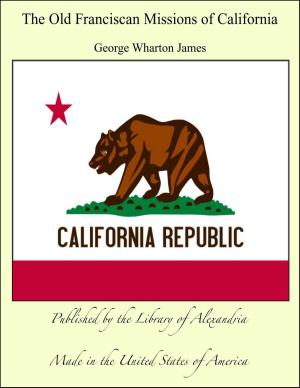An Account of the Danes and Norwegians in England, Scotland, and Ireland
Nonfiction, Religion & Spirituality, New Age, History, Fiction & Literature| Author: | Jens Jakob Asmussen Worsaae | ISBN: | 9781465617279 |
| Publisher: | Library of Alexandria | Publication: | March 8, 2015 |
| Imprint: | Language: | English |
| Author: | Jens Jakob Asmussen Worsaae |
| ISBN: | 9781465617279 |
| Publisher: | Library of Alexandria |
| Publication: | March 8, 2015 |
| Imprint: | |
| Language: | English |
The greatest, and for general history the most important, memorials of the Scandinavian people are connected, as is well known, with the expeditions of the Normans, and with the Thirty Years’ War. In the Norman expeditions the North, mighty in its heathenism, poured forth towards the east, the west, and the south, its numerous warriors and shrewd men, who subverted old kingdoms, and founded new and powerful ones in their place. It was by Danish and Norwegian fleets that Normandy and England were then conquered, and kingdoms won in Scotland, Ireland, and North Holland; whilst Norwegians settled on the Faroe Islands (Dan., Faröerne), and discovered and colonized Iceland. Hence their descendants, having afterwards passed over to Greenland, discovered America, and were in the habit of navigating the Atlantic Ocean centuries before other European nations. In all these voyages proportionally few Swedes took part. Inscriptions on runic stones in Sweden sometimes speak, indeed, of men who had settled or met their death in the west over in England (Anklant or Inklant). But on the whole the views of the Swedes were at that time, as well as at a later period, mostly directed towards the east. Swedish Vikings, or pirates, harried and established themselves upon the coasts of Finland and of the countries now belonging to Russia; and a tribe of them, the Varæger, even made themselves there the reigning people. Partly in consequence of this, Sweden—and particularly the Island of Gothland, or Gulland—became the centre of the active trade which in ancient times (that is, from the eighth to the twelfth century,) was carried on, through Russia, between Scandinavia and the countries around the Black and Caspian Seas, as well as Arabia. The Swedes, however, do not appear very prominently either in ancient times or in the early part of the middle ages. They were prevented from playing any considerable part in the distant lands towards the West by the sanguinary intestine disputes which took place between them and the Goths; and it was not till the fifteenth century, and after these disputes were adjusted, that they could appear upon the theatre of the world as a nation. The Swedish Charleses and Gustavuses, by means of the sword, subsequently caused the Swedish name to be feared and honoured; not, however, at sea, but on land, on the plains of Russia, Poland, and Germany. Gustavus Adolphus, in the Thirty Years’ War, after the disaster of the Danish-Norwegian king Christian IV., powerfully contributed to uphold Lutheranism, and by that means to establish liberty of conscience for Germany and the rest of Europe.
The greatest, and for general history the most important, memorials of the Scandinavian people are connected, as is well known, with the expeditions of the Normans, and with the Thirty Years’ War. In the Norman expeditions the North, mighty in its heathenism, poured forth towards the east, the west, and the south, its numerous warriors and shrewd men, who subverted old kingdoms, and founded new and powerful ones in their place. It was by Danish and Norwegian fleets that Normandy and England were then conquered, and kingdoms won in Scotland, Ireland, and North Holland; whilst Norwegians settled on the Faroe Islands (Dan., Faröerne), and discovered and colonized Iceland. Hence their descendants, having afterwards passed over to Greenland, discovered America, and were in the habit of navigating the Atlantic Ocean centuries before other European nations. In all these voyages proportionally few Swedes took part. Inscriptions on runic stones in Sweden sometimes speak, indeed, of men who had settled or met their death in the west over in England (Anklant or Inklant). But on the whole the views of the Swedes were at that time, as well as at a later period, mostly directed towards the east. Swedish Vikings, or pirates, harried and established themselves upon the coasts of Finland and of the countries now belonging to Russia; and a tribe of them, the Varæger, even made themselves there the reigning people. Partly in consequence of this, Sweden—and particularly the Island of Gothland, or Gulland—became the centre of the active trade which in ancient times (that is, from the eighth to the twelfth century,) was carried on, through Russia, between Scandinavia and the countries around the Black and Caspian Seas, as well as Arabia. The Swedes, however, do not appear very prominently either in ancient times or in the early part of the middle ages. They were prevented from playing any considerable part in the distant lands towards the West by the sanguinary intestine disputes which took place between them and the Goths; and it was not till the fifteenth century, and after these disputes were adjusted, that they could appear upon the theatre of the world as a nation. The Swedish Charleses and Gustavuses, by means of the sword, subsequently caused the Swedish name to be feared and honoured; not, however, at sea, but on land, on the plains of Russia, Poland, and Germany. Gustavus Adolphus, in the Thirty Years’ War, after the disaster of the Danish-Norwegian king Christian IV., powerfully contributed to uphold Lutheranism, and by that means to establish liberty of conscience for Germany and the rest of Europe.















